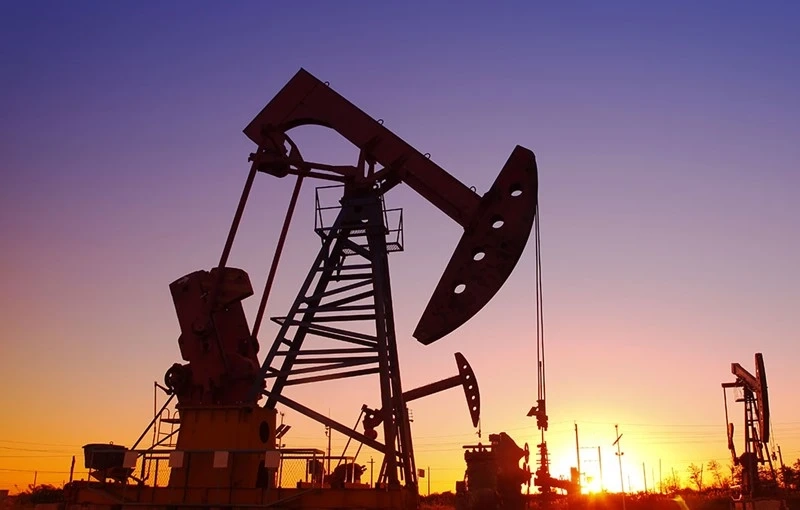Industrial applications require reliable and efficient sealing and control mechanisms to maintain smooth operations and ensure safety. Among the crucial components that play a significant role in these systems are the spiral metal gasket and the butterfly valve. These two products are integral to industries such as oil and gas, power generation, chemical manufacturing, and HVAC systems, providing vital functions in sealing, controlling fluid flow, and preventing leaks.
In this guest post, we will explore the importance of these components, their benefits, and how they contribute to the efficiency and safety of industrial systems.
Understanding Spiral Wound Metal Gaskets
A spiral-wound metal gasket is a type of mechanical seal used in various industrial applications, particularly in high-pressure and high-temperature environments. It is composed of multiple layers of metal and filler material wound together in a spiral configuration. The metal layers provide strength and resilience, while the filler material ensures a proper seal by filling any gaps between mating surfaces.
Key Features of Spiral Wound Metal Gaskets
- Durability: The combination of metal and filler material gives the gasket exceptional durability, making it capable of withstanding extreme pressures and temperatures. This is crucial for industries such as petrochemical and power plants, where operating conditions can be harsh.
- Flexibility: Despite their robustness, wound metal gaskets offer flexibility. The spiral design allows the gasket to conform to irregular surfaces and provide an excellent seal, even under fluctuating pressure or temperature conditions.
- Corrosion Resistance: Depending on the material used, these gaskets can be resistant to a wide range of corrosive substances, making them ideal for industries handling chemicals or other aggressive fluids.
- Leak Prevention: The primary function of a spiral wound metal gasket is to prevent leaks in piping systems. They are particularly effective in high-pressure systems, ensuring that there are no escapes of gas or liquid, which could result in costly repairs, environmental damage, or safety hazards.
Applications of Spiral Wound Metal Gaskets
● Petrochemical Industry: These gaskets are commonly used in refineries and chemical plants due to their ability to withstand high temperatures and corrosive environments.
● Power Generation: Metal gaskets are used in boilers, heat exchangers, and steam systems to prevent leaks in critical pressure vessels.
●Oil and Gas: They are used in offshore and onshore oil rigs, pipelines, and other high-pressure systems that require reliable sealing solutions.
● HVAC Systems: In HVAC systems, these gaskets are used to ensure a secure seal between ducts, preventing air leaks and improving energy efficiency.
The Importance of High-Performance Butterfly Valves
A high-performance butterfly valve is a type of valve used to regulate fluid or gas flow in a pipeline. The valve consists of a disc that rotates around an axis to control the flow of the medium. When the valve is fully open, the disc aligns with the flow path, allowing maximum flow. Conversely, when the valve is closed, the disc blocks the flow.
Key Features of High-Performance Butterfly Valves
- Flow Control: Butterfly valves are designed to provide precise flow control. With their ability to regulate flow effectively, these valves are essential in industries that require accurate measurement and regulation of fluids and gases.
- Compact and Lightweight: Compared to other types of valves, butterfly valves are compact and lightweight, making them ideal for installations where space is limited or weight is a concern. Their simple design also makes them cost-effective, reducing the overall system costs.
- High-Temperature and High-Pressure Resistance: These valves are designed to handle high temperatures and pressures, making them suitable for industries such as oil and gas, power generation, and chemical manufacturing. With the right materials, high-performance butterfly valves can withstand extreme conditions without compromising performance.
- Durability: Butterfly valves are built to last, even in aggressive environments. The robust design and materials used in manufacturing these valves ensure long service life, which reduces the need for frequent replacements and minimizes maintenance costs.
- Versatility: These valves are highly versatile and can be used in a variety of applications, including regulating the flow of water, oil, gas, and chemicals. They are also available in different materials and configurations, making them suitable for various industrial needs.
Applications of High-Performance Butterfly Valves
● Oil and Gas: In the oil and gas industry, these valves control the flow of crude oil, natural gas, and other fluids in pipelines, tanks, and processing plants. Their ability to withstand extreme pressure and temperatures makes them ideal for this demanding industry.
●Power Plants: These valves are used in cooling water systems, steam turbines, and other critical systems in power generation plants. Their precise control and durability make them a key component in maintaining system efficiency.
● Water Treatment: In water treatment plants, valves regulate the flow of water through filtration and treatment systems, ensuring proper flow rates for optimal performance.
● Chemical Processing: These valves control the flow of chemicals, acids, and other corrosive fluids in chemical plants. With the right materials, butterfly valves are resistant to corrosion and can handle aggressive chemicals with ease.
How Spiral Wound Metal Gaskets and High-Performance Butterfly Valves Work Together
In many industrial applications, spiral-wound metal gaskets and butterfly valves work in tandem to ensure a safe, efficient, and reliable system. The gasket provides a tight seal around the valve, preventing leaks and ensuring that the valve performs optimally. Meanwhile, the butterfly valve regulates the flow of fluids and gases, maintaining control over the system’s operations.
For example, in a petrochemical plant, a butterfly valve may be used to control the flow of gas or liquid through a pipeline, while a metal gasket ensures that there are no leaks at the connection points between the valve and the pipe. Together, these components help maintain the integrity of the system, preventing dangerous leaks and ensuring optimal performance.
Benefits of Using Both Components in Industrial Systems
- Enhanced Safety: The combination of a metal gasket and a butterfly valve ensures that fluid or gas flow is properly controlled while preventing leaks. This reduces the risk of hazardous spills, explosions, or other safety incidents in the workplace.
- Increased Efficiency: With their ability to handle extreme pressures and temperatures, both the gasket and valve contribute to the overall efficiency of industrial systems. They allow for more precise control of fluid flow, which optimizes processes and reduces energy consumption.
- Cost Savings: By using durable components like metal gaskets and high-performance butterfly valves, businesses can reduce maintenance and replacement costs. These products are designed for longevity, which translates into lower long-term operational expenses.
- Regulatory Compliance: Both components help businesses meet industry standards and regulatory requirements. For example, a metal gasket can prevent leaks in high-pressure systems, ensuring compliance with environmental and safety regulations, while a butterfly valve can help maintain precise control over fluid systems, which is often required by regulatory bodies.
Conclusion
The combination of metal gaskets and butterfly valves offers numerous benefits to industries requiring reliable, safe, and efficient sealing and flow control. These components are designed to withstand extreme conditions, ensuring the integrity of critical systems while optimizing operational performance. Whether in the oil and gas sector, power generation, or chemical manufacturing, these products play a vital role in maintaining system efficiency, safety, and compliance.


